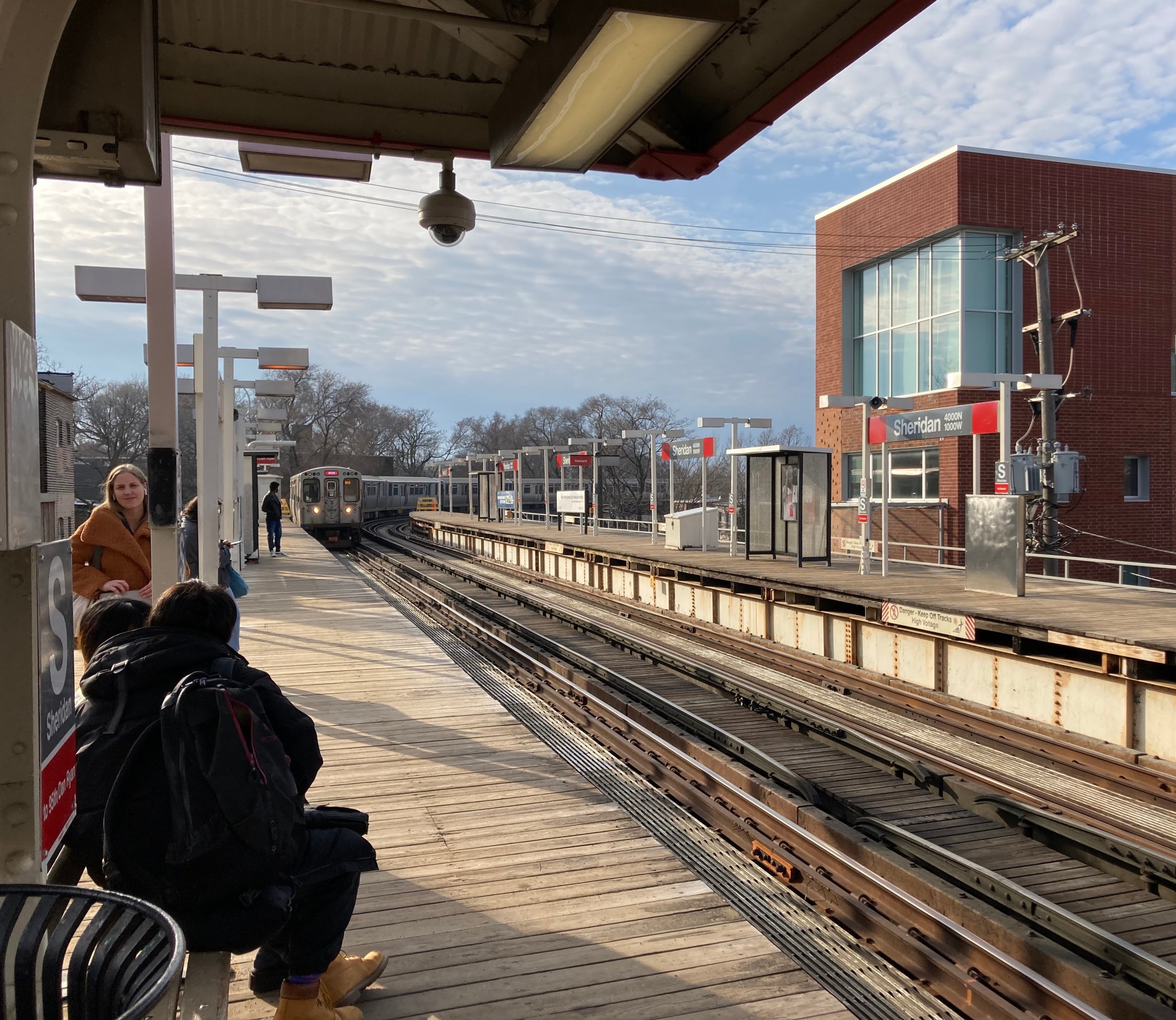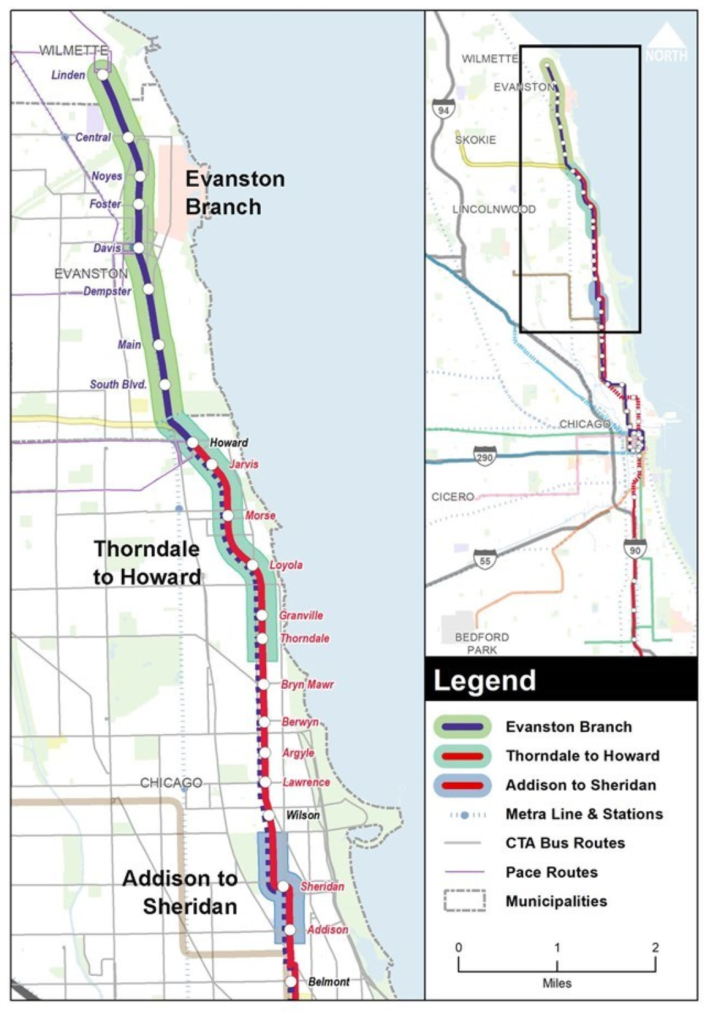Recently I caught the Red Line from the Sheridan station in Lakeview with a friend who's currently having mobility issues. Because the century-old station lacks an elevator, my friend had to slowly make their way up the long flight of stairs, pausing to catch their breath on each landing. And, of course, wheelchair users can't use this 'L' stop at all.
46th Ward aldermanic hopefuls highlighted this problem, as well as the generally deteriorated state of the station, during a recent debate. "It is a deathtrap for a lot of our neighbors," said candidate Marianne LaLonde [The stairs are] steep, it’s extremely slippery in the winter time, and it’s not accessible for a lot of our neighbors. This is an issue that has been big in our ward for a long time, and I really would attack it."
The north Red Line's equally outdated Lawrence, Argyle, Berwyn, and Bryn Mawr stations are currently being reconstructed with elevators as part of the $2.1 billion first phase of the Red and Purple Modernization program.
Last week there was a light in the (subway) tunnel in terms of making the remaining non-accessible North Side Red stations and Purple stops ADA-compliant, as the CTA announced a pair of virtual public meeting on the RPM Next Phases Planning Study. The study will lay the groundwork for modernizing the 'L' route between Sheridan (3900 N.) and the Addison Street stop (3600 N.); the stretch between the Thorndale Avenue station (5930 N.) and Howard Street stop (7600 N.); all of the 3.3.-mile Purple Line branch in Evanston and Wilmette. This will involve making all of the remaining non-accessible stations wheelchair-friendly, as well as updating infrastructure like platforms, tracks, and signals.
The CTA will host two meetings, one centered on the Chicago project area, and the other focusing on the Purple Line. Simultaneous Spanish and sign language interpretation will be provided for the online meetings, as well as captioning.
Registration info:
Focus: Chicago Project Area: Addison to Sheridan, Thorndale to Howard Red Line
Tuesday, March 14, 6-7 p.m.
Click here to register for the March 14 virtual public meeting
Focus: Evanston Project Area - Howard to Linden Purple Line
Thursday, March 16, 6-7 p.m.
Click here to register for the March 16 virtual public meeting
If you can't attend either meeting, or want to provide more input, you can take the RPM Next Phases Planning study survey though March 27. The questionnaire asks users about their travel habits, and which upgrades to the Red Line would be most helpful to them.
"Much of the elevated structure, embankments, and stations on the corridor were originally built in the early 1900s and require frequent maintenance and often necessitate slow zones," the CTA said in a statement. "The corridor needs investment to add capacity, reduce travel times, increase access to jobs and destinations, and improve access for people with disabilities. Rebuilding and modernizing stations, tracks, and infrastructure will allow CTA to improve operational efficiency and meet ridership demand for the next 100 years."
The study is expected to wrap up this year. It will allow the CTA to launch the next steps for making the next phases of RPM a reality, including engineering work, conducting a National Environmental Policy Act environmental review, and identifying funding for implementation. The CTA has not announced how much RPM Phase II is likely to cost, or when it might be completed.
Phase I was bankrolled by Illinois' first-ever transit tax-increment financing district, a special kind of TIF that doesn't divert funding from public schools, which unlocked $1.1 billion in federal funding. Last December the Chicago City Council passed another transit TIF to pay for the $3.6 billion south Red Line extension, and the CTA is currently seeking federal funds for that project. It's likely that additional transit TIFs will be created to help pay for the next phases, roping off districts in which a portion of any future increase in property tax revenues will be earmarked for the new project, which will in turn increase property values.






